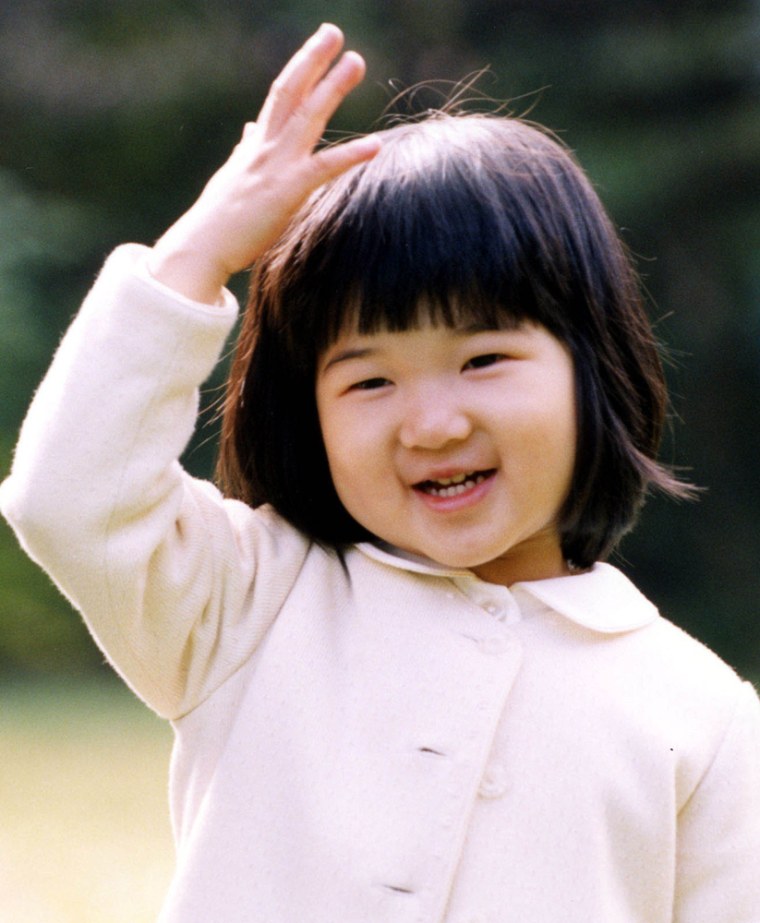Japan will prepare for a reigning empress for the first time in more than 200 years as the government drafts legal changes allowing female succession, a news agency reported Monday.
Japan’s royals are facing their most serious succession crisis in centuries. The current law bars women from ascending the Chrysanthemum Throne and no boy has been born to the imperial family since the 1960s.
Kyodo News quoted an unnamed government official as saying “Princess Aiko will go next” after her father, Crown Prince Naruhito, in line for the throne. The report gave no other details, and there was no answer late Monday the prime minister’s office.
Princess Aiko, 3, is the only child of Crown Prince Naruhito and Crown Princess Masako.
A government panel of experts began debating an amendment to the law last month but is not due to reach a conclusion until later this year. Among the issues the expert panel must resolve are whether the first-born child — be it a boy or a girl — should be first in line to the throne or if the first-born male should take precedence.
Public support for a reigning empress
Prime Minister Junichiro Koizumi is expected to act on the panel’s recommendations. Parliament would also need to approve a change in the law.
Recent polls have placed public support for a reigning empress at above 80 percent. Hiroyuki Yoshikawa, the head of the 10-member expert panel, has said public opinion would be the most important factor in their considerations.
The current crisis arose in part because the succession law drafted after World War II — part of legal changes redefining the emperor as a ceremonial leader — imposed the male-only rule.
The law has put enormous pressure on Masako to have a baby boy, so much so that she suffered a nervous breakdown in late 2003. The Harvard- and Oxford-educated former diplomat has been forced to spend much of the past year out of the public eye as she recuperates.
In a brief statement on her 41st birthday in December, Masako said: “I feel my health is getting better gradually.”
Hideki Hayashida, grand master of the crown prince’s family, told the media on the occasion of her birthday that the princess was “heading toward recovery” but tired easily and didn’t sleep soundly.
Turmoil in royal household
Masako gave up a promising career in Japan’s Foreign Ministry to marry Naruhito 12 years ago. Many Japanese had hoped the modern and multilingual princess would help shake up the conservative, tradition-minded imperial family and the Imperial Household Agency, which runs the royals’ affairs.
Last year, Naruhito unleashed a storm when he suggested that unidentified palace officials had contributed to Masako’s illness by disrespecting her background and career.
The turmoil has stirred calls for allowing an empress to ascend to the throne and for reform of the agency.
A woman last sat on the Chrysanthemum Throne from 1762 to 1771, when Empress Gosakuramachi reigned until abdicating in favor of her nephew.
Seven other women have occupied the throne throughout its 1,500 years of documented history, but they all served as temporary caretakers until males could take over. None of their offspring ever succeeded them.
